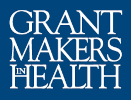2010 Terrance Keenan Award Acceptance Speech
Read about The Commonwealth Fund’s Dr. Mary Jane Koren’s 30 years of work to improve the quality of institutional long-term care, and be inspired by her willingness to take chances on innovation, revisit old ideas, and find treasure among the wreckage.
Implementing the Medicare Prescription Drug Benefit
On January 1, 2006, Medicare prescription drug coverage became available to the program’s 43 million beneficiaries. To receive the coverage, however, beneficiaries must actively opt in to Medicare Part D by selecting a prescription drug plan (PDP).
Getting Prescription Drugs to Those Who Need Them Most
There are major changes taking place in the way elderly and disabled people pay for prescription drugs. These changes are being ushered in by the new Medicare law, which, if it lives up to its promise, will be incredibly helpful to some of the most vulnerable members of our society. What are the details of the new law? How many people will it affect? How will low-income people be assisted? What are the implementation challenges? How are they being addressed by the federal government? What can grantmakers do to help?
New Choices and Hard Decisions: Helping Seniors Navigate Medicare
Educating seniors on the changes to the Medicare program will be a challenge for both the public and private sectors. Reaching the nation’s 41 million Medicare beneficiaries — 35 million of whom are over the age of 65 — will require a mix of customized, one-on-one assistance and broad education campaigns. This Issue Focus proposes that providing information and referral services for seniors and their families is an area ripe for foundation work, and outlines a number of opportunities for grantmakers.
Medicare + Choice – New Health Plan Options Challenge Medicare Beneficiaries to Act as Informed Consumers: Is the System Ready?
This supplement to the GIH Bulletin outlined new health plan options that challenge medicare beneficiaries to act as informed consumers.
